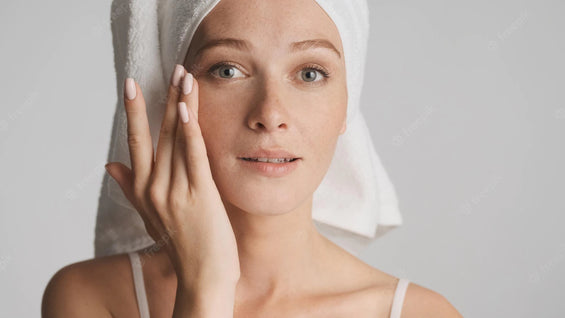
All About Retinol. Everything you need to know from expert Arantza Azparren from mesoestetic®
Retinol, an anti-ageing trend
Retinol is a potent vitamin A-derived active ingredient that has become a key anti-ageing trend in recent years, but its properties have been known for more than 40 years, so why is it so prevalent now?
Retinol is a vitamin A derivative whose formula has been improved over the years. In the past, due to the instability of its formula, retinol could cause irritation and tolerance issues in certain skin types. Thanks to new and innovative formulations and production technologies, these problems of the past have been resolved and retinol has become one of the most popular anti-ageing active ingredients.
How it acts on the skin
- Ageing skin produces less collagen, resulting in the appearance of fine lines, wrinkles, and furrows. Retinol penetrates into the deeper layers of the skin, thanks to its light molecular weight, helping to visibly plump the complexion.
- It also offers the benefits of skin revitalization resulting in visibly smoother and more luminous-looking skin.
- It also helps reduce the appearance of pigmentation and dark spots.
- It provides antioxidant power.
- It helps regulate sebum production in oily skin to help minimise the appearance of blemishes.
Retinol is a very potent active ingredient and must therefore be used in the right way.
- If you have never used retinol before, incorporate it into your skincare routine every other day for the first few weeks. Retinol can cause irritation if you start using it without the skin having undergone a ‘retinization’ process or if the formula is too strong for you. If you are starting to use retinol, we recommend a low percentage formula (0.1% to 0.3%), applying a small pea-sized amount once or twice a week. Thereafter, gradually increase the amount to allow the skin to adapt until it is applied every night. Once the skin has managed to tolerate the product, you can consider the option of maximising the results by opting for a higher percentage.
- Pay attention to possible skin responses. During the process of ‘retinization’ of the skin, some common responses (such as mild irritation, dryness or flaking) may occur, which are quite normal. During this period where skin is adapting, pay attention to the skin's response and look out for signs such as mild redness or flaking. People with sensitive skin should be especially cautious with the use of retinol and, depending on the case, use other, milder retinoids.
- The time of application is at night.
- Apply sunscreen every day. This should be broad spectrum and SPF50+. Retinol makes the skin particularly vulnerable to the sun’s rays, so wearing a high SPF sun protection is essential to avoid skin damage.
- It is best to avoid introducing it to your skin at times of the year that involve a lot of direct exposure to the sun.
- A simple moisturiser can be used before or after using the retinol product to prevent irritation and maintain skin hydration. In the morning, brighten your skin with vitamin C products such as age element brightening cream or age element brightening concentrate, and protect against photoageing with a moisturising sunscreen with SPF50+ such as mesoprotech® light water antiaging veil.
Which actives to avoid in the same application when using retinol
- Vitamin C. If we combine retinol with vitamin C, we will be reducing the effectiveness of both products. This is due to a discrepancy between the pH at which these active ingredients are usually formulated: vitamin C is usually formulated at acid pH (3-3,5) to maximise its ability to penetrate the skin; however, retinol works best at a more neutral pH (around 5). It is recommended to apply vitamin C in the morning and retinol at night.
- AHAs (alpha-hydroxy acids). Both AHAs and retinol act as exfoliants. If we combine them, we would be "over-exfoliating" and could cause significant irritation. If you want to use both active ingredients, it is advisable to use them every other night (as both should be applied at night). Some of the best known are glycolic acid, lactic acid and mandelic acid.
- BHA (beta-hydroxy acids). BHAs are sebum regulators, an example of which is salicylic acid, used in many anti- blemish products. This type of active ingredient can cause excessive dryness if mixed with retinol. They can be applied every other night or leave the BHAs for the mornings, without forgetting sun protection.
Introducing....skinretin® 0.3%, a new anti-ageing cream from mesoestetic® featuring highly efficacious retinol with high skin tolerance, perfect for those looking to ease their way into Retinol. Designed for home-use, skinretin® combines 0.3% pure retinol and 0.7% bakuchiol in its formula and is backed by clinical and in vitro studies.
skinretin® 0.3% is a comprehensive anti-ageing night treatment: it helps improve the appearance of all signs of skin ageing (dark spots, lack of luminosity, wrinkles and expression lines, and loss of firmness and elasticity), its formula and texture is suitable for all skin types and it has a high skin tolerance.
The effects of retinol are enhanced when used in combination with bakuchiol, a natural active plant ingredient that has become widely known as an alternative to retinol. Bakuchiol provides very similar benefits to retinol with the advantage of being ideal for sensitive skin that may be irritated and has a lower tolerance to retinoids.
The formula is enhanced with other active ingredients, such as a post-biotic complex (which visibly revitalises, balances and protects the skin's microbiota), centella asiatica (which has a restorative effect) and ectoine (which helps strengthen the skin barrier). With this composition, skinretin® 0.3% effectively helps combat the signs of ageing for all skin types.
skinretin® 0.3% is now available at mesoestetic® skin clinics across Australia and New Zealand, visit our clinic finder to find your nearest clinic today.













